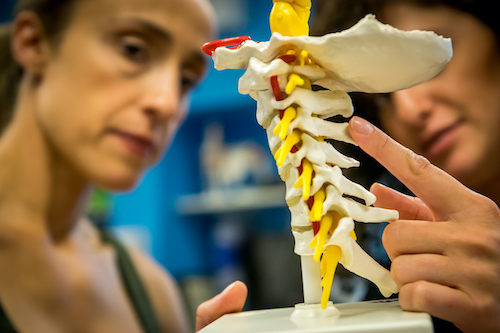Authored by Dr. Susan E. Brown, PhD
Every day doctors tell women their DEXA test shows their bone density is that of an 80-year-old, or that they “must” take bone drugs. Women worry about this diagnosis. I worry that most of these women are NOT told whether bone loss is ongoing or occurred previously. Knowing if your bone loss is still taking place is critical when it comes to truly understanding your risk of excessive bone loss, osteoporosis and fracture. Fortunately, a test is available that provides this information. Let’s learn about the NTx test.
What is an NTx test?
Bone is a living tissue made up of minerals, collagen and many other constituents. As bone breaks down, its by-products appear in the blood and then are ultimately excreted in the urine.

N-telopeptide or NTx is a biomarker for collagen fragments/collagen by-products released into the bloodstream and excreted in urine when bone tissue is being broken down. The NTx test measures the concentration of these biomarkers. High levels of NTx in the blood or urine indicate higher levels of byproducts and increased bone breakdown.
When a woman diagnosed or at high risk for osteoporosis consistently takes NTx tests it is possible to understand whether her bone loss is active and/or excessive. On the other hand, NTx may show no increased breakdown. This could mean that excess bone loss is no longer taking place. Bone density as measured by DEXA only provides a static snapshot of your bones. It doesn’t distinguish if bone loss is ongoing or not.
The NTx test is especially valuable in monitoring the effectiveness of a treatment plan for osteoporosis. For example, a decrease in NTx levels back into normal range over time may indicate that the treatment is helping to reduce bone resorption and improve bone health.
At the Center for Better Bones, we use the Osteomark NTx urine test to determine if women are undergoing excessive bone loss. We look to bring the urine NTx level down to the 40s. In most cases this indicates that bone breakdown has normalized. There are some cases, however, where bone breakdown is very low, but bone build-up is even lower. This condition is “low turnover osteoporosis.” It is detected when a person has a low NTx, but is still losing significant bone (5-6%) as seen on bone density testing.
All of this is great information to have. It can point to the best direction to take to restore your bone health. Talk to your health care provider about NTx testing. Any woman concerned about her bone health would benefit from this simple test!









